The 10 Largest Marine Animals in the World
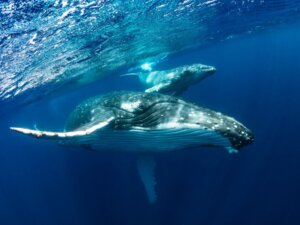
The oceans, the lungs of the planet, and the origin of life, are so incredibly vast that the life they harbor still isn’t fully known today. There have been many legends regarding the largest marine animals in the world, and you just can’t imagine their size until you have them right in front of you.
For this reason, we’ve prepared this article to pay tribute to the most enormous living beings in the marine environment. We’ll provide figures and comparisons, because perhaps in that way you’ll be able to get an idea of what it means to catch a glimpse of one of these magnificent animals.
The 10 largest marine animals in the world
Marine mammals like whales are well known for their impressive size. However, there are certain fish and invertebrates that aren’t far behind. Here we bring you the most striking giants of the seas.
1. Giant squid
The genus Architeuthis groups together the cephalopods that are popularly known as “giant squid”. It’s believed to be the largest invertebrate in the world and people have found examples up to 30 meters long and a ton in weight.
A curiosity about these cephalopods is their incredible vision, adapted to the depths where they live: between 400 and 1500 meters (1300 – 4900 feet) below the surface. They can see almost in complete darkness, something that does not surprise us with the little light available in their environment.
2. Sperm whale (Physeter macrocephalus)
Not surprisingly, the sperm whale’s 15-ton weight inspired the Moby Dick novel. It’s the largest species of toothed whales, or odontocetes, and the specimens move in family groups, creating close social ties between their members.
The sperm whale is also the loudest animal in the world: the clicks of its echolocation can kill small prey. The highest sound pressure level ever recorded from an animal was that of a sperm whale off the coast of northern Norway. That snap reached 235 decibels.
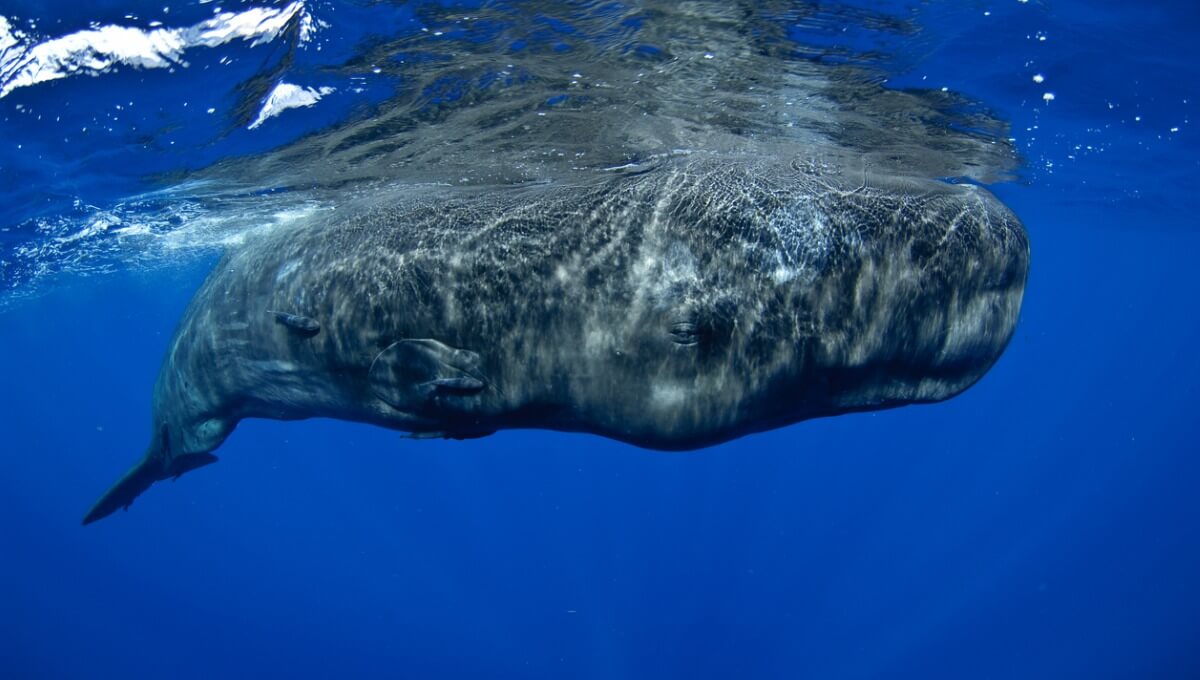
3. Whale shark (Rhincodon typus)
The whale shark is the largest fish in the world: it can weigh more than 34 tons and measure up to 12 meters. It isn’t a hunting species, but filters the water through its gill combs to obtain plankton, krill, nekton, algae, and occasionally some small fish or crustaceans.
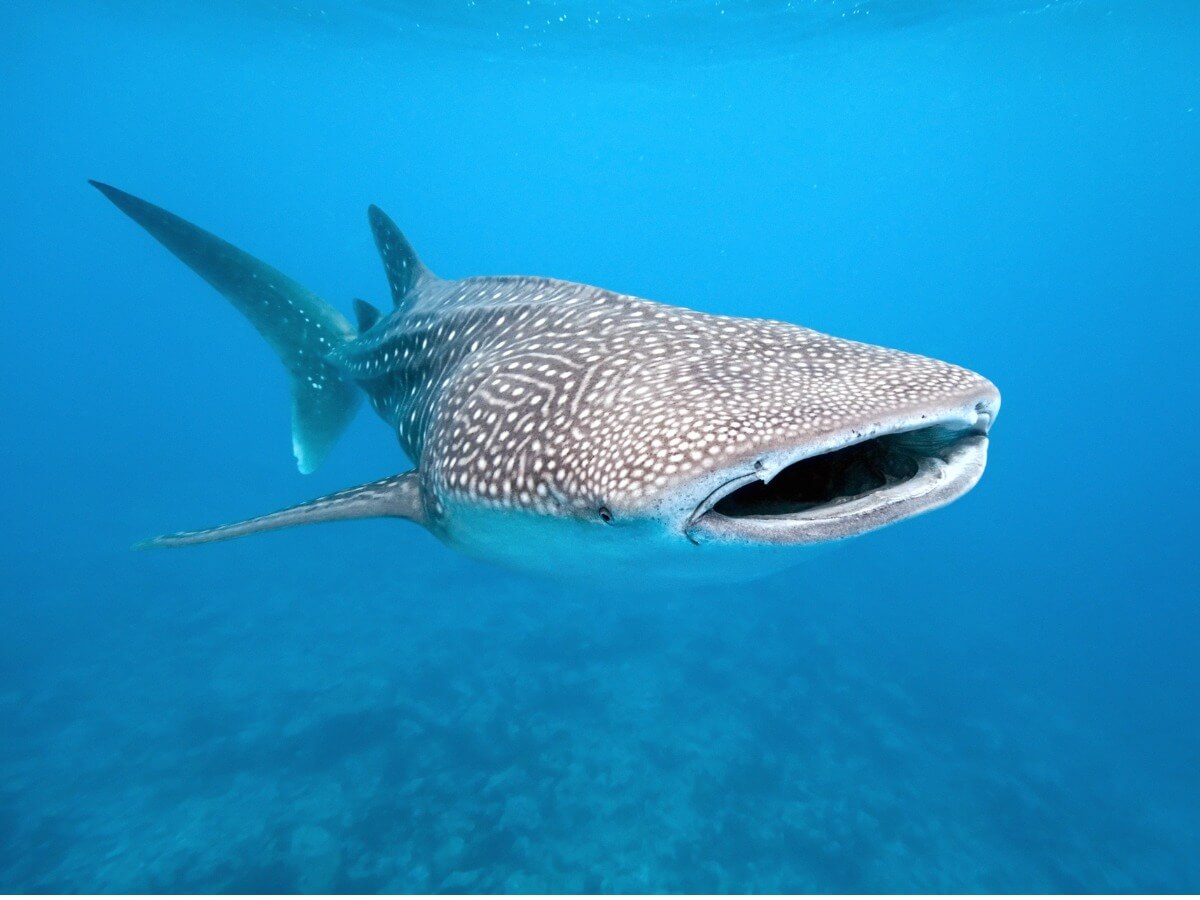
4. Southern elephant seal (Mirounga leonina)
The elephant seal is about the world’s largest phocid. Its name comes from the proboscis it has on its snout, which it can inflate to make it appear more threatening or as a form of courtship. The species has a marked sexual dimorphism, as males can weigh 4 tons and measure 6 meters (20 feet). Females, on the other hand, never reach 4 meters long (13 feet).
5. Giant oarfish (Regalecus glesne)
This fish, one of the largest marine animals, lives in almost all the oceans except the Poles. It’s known as the longest fish in the world at 11 meters (36 feet) in length (although specimens reaching 17 have been reported). There’s a popular belief (as yet unproven) that it appears before and after an earthquake, serving as a warning.
Some experts venture that deep-sea fish, such as oarfish, may sense seismic activity earlier than those that live on the surface, which could explain the phenomenon.
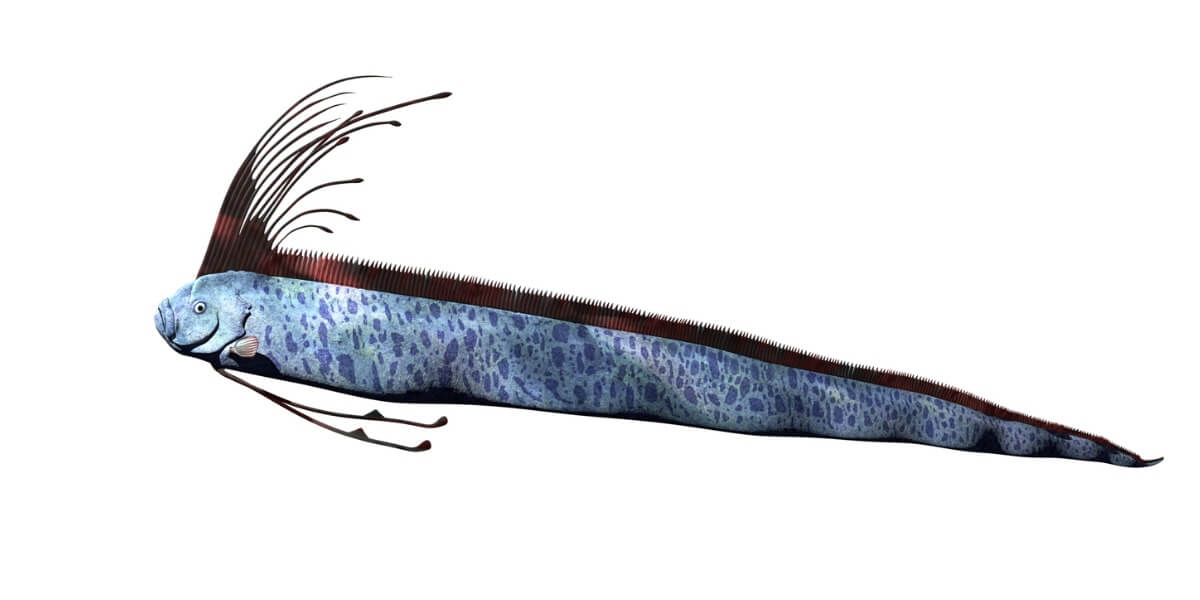
6. Basking shark (Cetorhinus maximus)
This is the largest fish behind the whale shark, with 10 meters (33 feet) in length and almost 4 tons in weight. Its appearance is impressive, as it swims with its mouth open, filtering plankton with its gills fully visible. The specimens migrate in the winter to abyssal areas, where they travel thousands of miles in search of large masses of food.
Its peaceful character and not being suspicious of humans have caused its decline, as its hunting and capture was simple. Currently, this fish is in danger of extinction, as its culling hasn’t stopped since its population began to decline.
7. Orca (Orcinus orca)
Misnamed “killer whales”, orcas are the largest member of the dolphin family. They’re super predators that feed on seals, penguins, fish, and even small whales. Their intelligence is remarkable and they live in small groups in which they interact in a complex way, even to the point of devising new group hunting strategies.
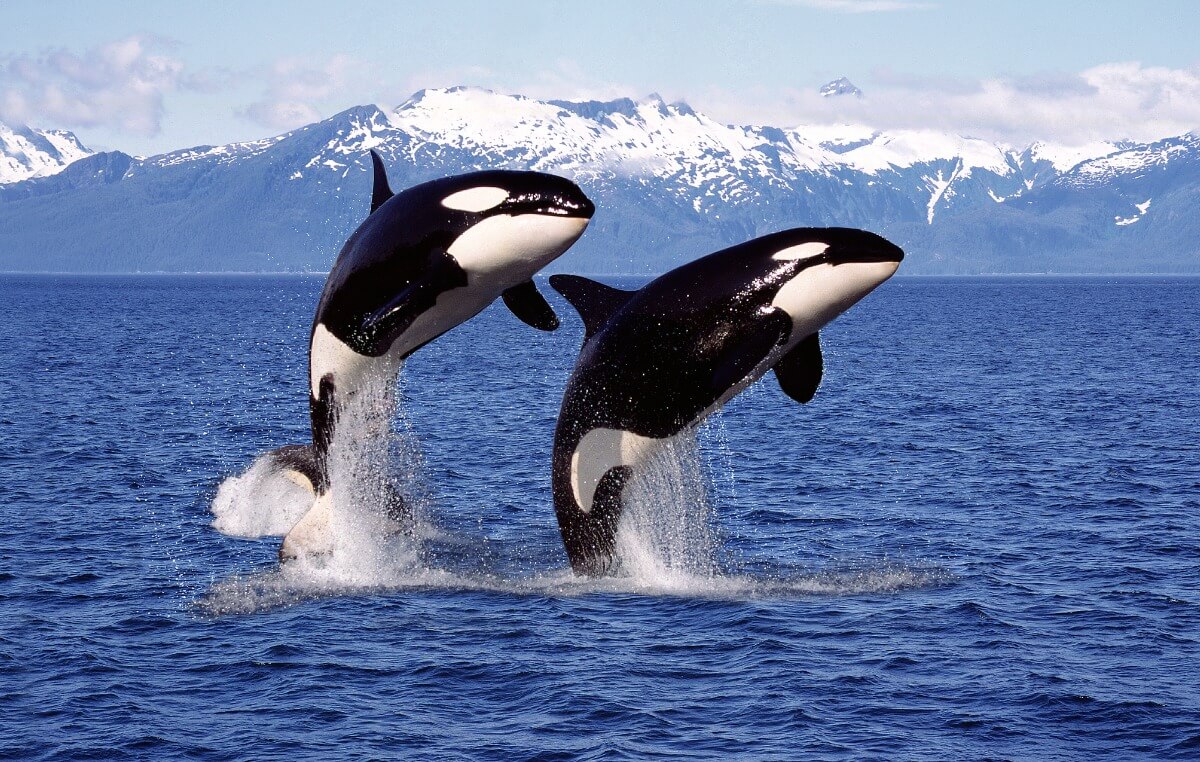
8. Manta ray (Mobula birostris)
The world’s largest stingray inhabits the warm areas of the world’s oceans and can reach a span of 9 meters (30 feet). These are solitary animals that feed on small fish, squid, and plankton. They’re totally harmless and in some regions they have become accustomed to the human presence.
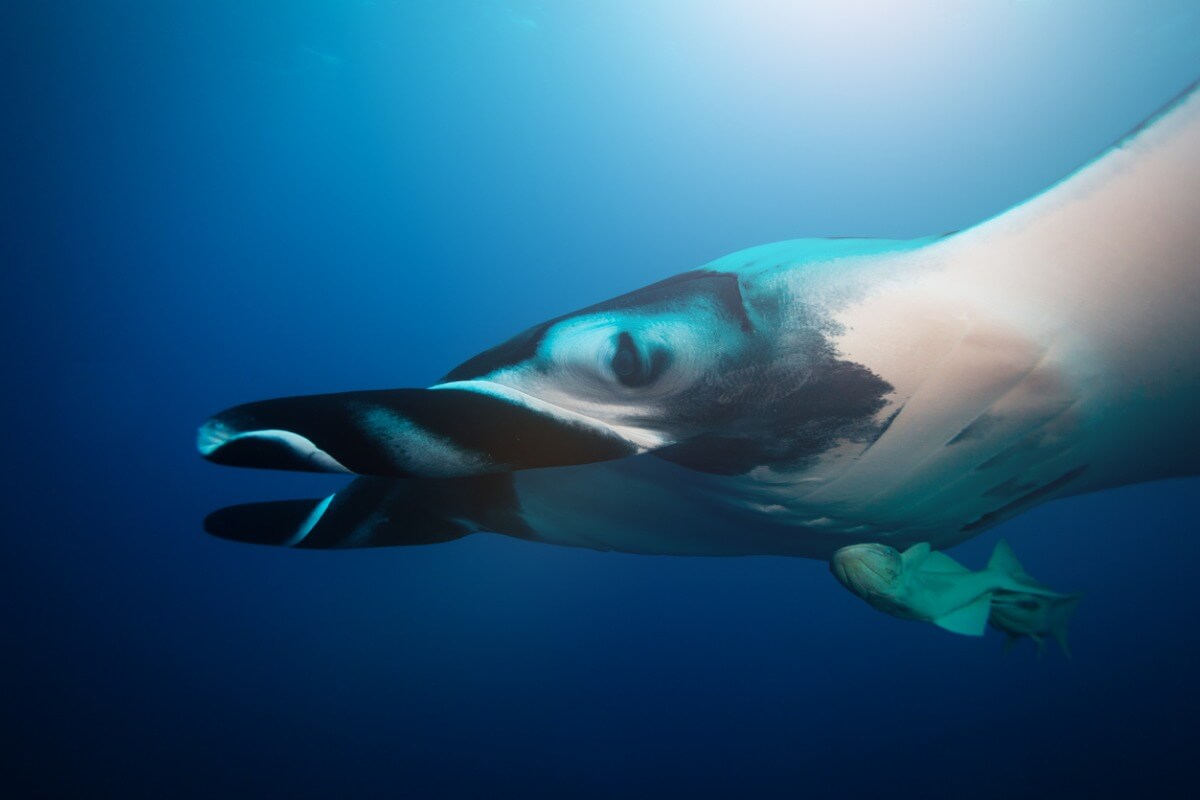
9. Fin whale (Balaenoptera physalus)
Of all the largest marine animals in the world, the fin whale ranks second. Its average length is usually 18 meters (60 feet) and it can weigh up to 90 tons. However, its incredible size doesn’t prevent it from swimming rapidly at an average of 37 kilometers per hour. Its intensive culling has placed it in a vulnerable state.
The jet of water that it expels through its blowhole when it rises to the surface can reach 6 meters (20 feet) in height.
10. Blue whale (Balaenoptera musculus)
Of course, this list couldn’t miss out the largest animal in the world, both on land and sea: the blue whale. It can measure 30 meters (100 feet) in length and more than 130 tons in weight.
This cetacean makes long migrations looking for warm and cool waters, as it spends summers in polar waters and winters in equatorial waters. Its vocalizations are incredible to hear, as its roar reaches almost a kilometer and a half away.
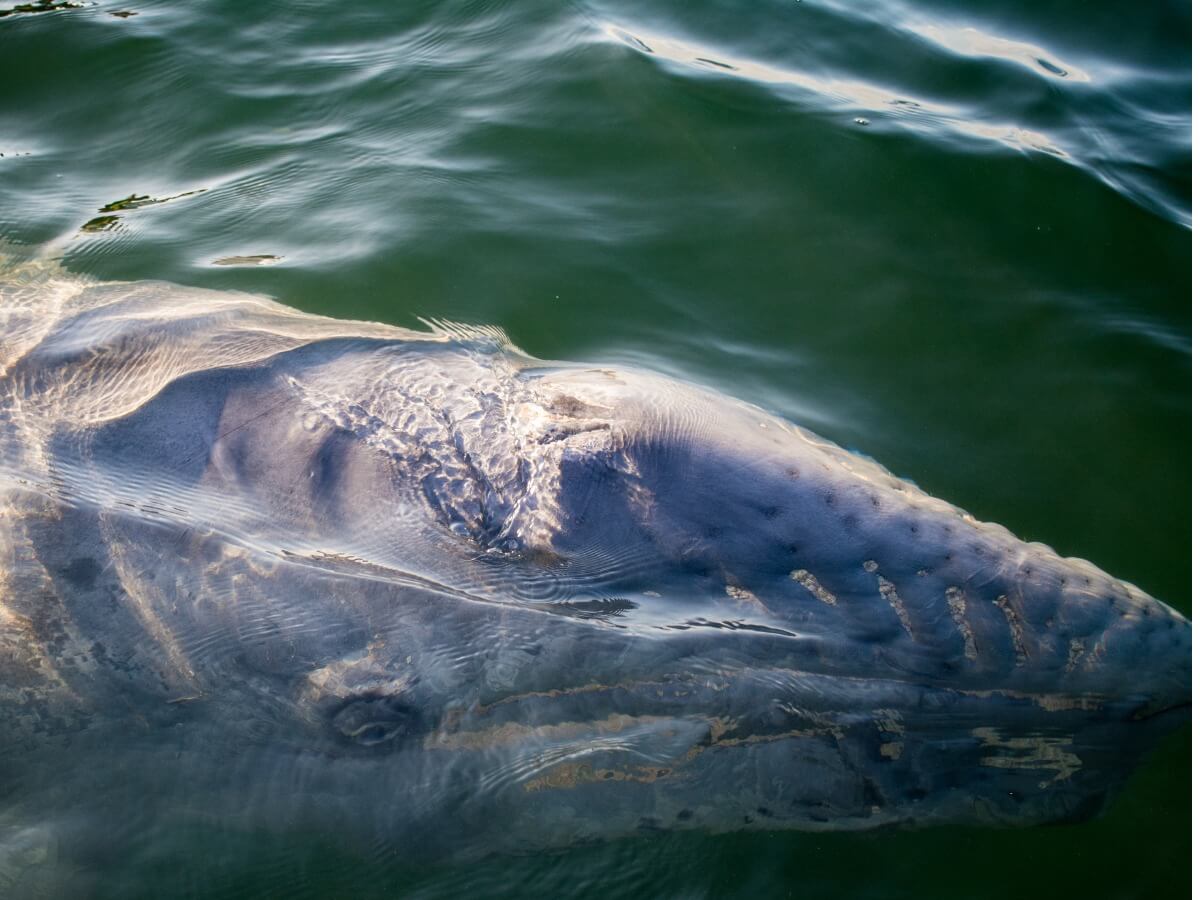
The largest marine animals in the world have always fascinated us, and with good reason. The negative side of this admiration is that, while some humans have been motivated to study and protect them, others prefer to hunt them. These beings are a reflection of the majesty of prehistoric times, and they only seek to live in peace.
The oceans, the lungs of the planet, and the origin of life, are so incredibly vast that the life they harbor still isn’t fully known today. There have been many legends regarding the largest marine animals in the world, and you just can’t imagine their size until you have them right in front of you.
For this reason, we’ve prepared this article to pay tribute to the most enormous living beings in the marine environment. We’ll provide figures and comparisons, because perhaps in that way you’ll be able to get an idea of what it means to catch a glimpse of one of these magnificent animals.
The 10 largest marine animals in the world
Marine mammals like whales are well known for their impressive size. However, there are certain fish and invertebrates that aren’t far behind. Here we bring you the most striking giants of the seas.
1. Giant squid
The genus Architeuthis groups together the cephalopods that are popularly known as “giant squid”. It’s believed to be the largest invertebrate in the world and people have found examples up to 30 meters long and a ton in weight.
A curiosity about these cephalopods is their incredible vision, adapted to the depths where they live: between 400 and 1500 meters (1300 – 4900 feet) below the surface. They can see almost in complete darkness, something that does not surprise us with the little light available in their environment.
2. Sperm whale (Physeter macrocephalus)
Not surprisingly, the sperm whale’s 15-ton weight inspired the Moby Dick novel. It’s the largest species of toothed whales, or odontocetes, and the specimens move in family groups, creating close social ties between their members.
The sperm whale is also the loudest animal in the world: the clicks of its echolocation can kill small prey. The highest sound pressure level ever recorded from an animal was that of a sperm whale off the coast of northern Norway. That snap reached 235 decibels.

3. Whale shark (Rhincodon typus)
The whale shark is the largest fish in the world: it can weigh more than 34 tons and measure up to 12 meters. It isn’t a hunting species, but filters the water through its gill combs to obtain plankton, krill, nekton, algae, and occasionally some small fish or crustaceans.

4. Southern elephant seal (Mirounga leonina)
The elephant seal is about the world’s largest phocid. Its name comes from the proboscis it has on its snout, which it can inflate to make it appear more threatening or as a form of courtship. The species has a marked sexual dimorphism, as males can weigh 4 tons and measure 6 meters (20 feet). Females, on the other hand, never reach 4 meters long (13 feet).
5. Giant oarfish (Regalecus glesne)
This fish, one of the largest marine animals, lives in almost all the oceans except the Poles. It’s known as the longest fish in the world at 11 meters (36 feet) in length (although specimens reaching 17 have been reported). There’s a popular belief (as yet unproven) that it appears before and after an earthquake, serving as a warning.
Some experts venture that deep-sea fish, such as oarfish, may sense seismic activity earlier than those that live on the surface, which could explain the phenomenon.

6. Basking shark (Cetorhinus maximus)
This is the largest fish behind the whale shark, with 10 meters (33 feet) in length and almost 4 tons in weight. Its appearance is impressive, as it swims with its mouth open, filtering plankton with its gills fully visible. The specimens migrate in the winter to abyssal areas, where they travel thousands of miles in search of large masses of food.
Its peaceful character and not being suspicious of humans have caused its decline, as its hunting and capture was simple. Currently, this fish is in danger of extinction, as its culling hasn’t stopped since its population began to decline.
7. Orca (Orcinus orca)
Misnamed “killer whales”, orcas are the largest member of the dolphin family. They’re super predators that feed on seals, penguins, fish, and even small whales. Their intelligence is remarkable and they live in small groups in which they interact in a complex way, even to the point of devising new group hunting strategies.

8. Manta ray (Mobula birostris)
The world’s largest stingray inhabits the warm areas of the world’s oceans and can reach a span of 9 meters (30 feet). These are solitary animals that feed on small fish, squid, and plankton. They’re totally harmless and in some regions they have become accustomed to the human presence.

9. Fin whale (Balaenoptera physalus)
Of all the largest marine animals in the world, the fin whale ranks second. Its average length is usually 18 meters (60 feet) and it can weigh up to 90 tons. However, its incredible size doesn’t prevent it from swimming rapidly at an average of 37 kilometers per hour. Its intensive culling has placed it in a vulnerable state.
The jet of water that it expels through its blowhole when it rises to the surface can reach 6 meters (20 feet) in height.
10. Blue whale (Balaenoptera musculus)
Of course, this list couldn’t miss out the largest animal in the world, both on land and sea: the blue whale. It can measure 30 meters (100 feet) in length and more than 130 tons in weight.
This cetacean makes long migrations looking for warm and cool waters, as it spends summers in polar waters and winters in equatorial waters. Its vocalizations are incredible to hear, as its roar reaches almost a kilometer and a half away.

The largest marine animals in the world have always fascinated us, and with good reason. The negative side of this admiration is that, while some humans have been motivated to study and protect them, others prefer to hunt them. These beings are a reflection of the majesty of prehistoric times, and they only seek to live in peace.
All cited sources were thoroughly reviewed by our team to ensure their quality, reliability, currency, and validity. The bibliography of this article was considered reliable and of academic or scientific accuracy.
- Rigby, C.L., Barreto, R., Carlson, J., Fernando, D., Fordham, S., Francis, M.P., Herman, K., Jabado, R.W., Liu, K.M., Marshall, A., Romanov, E. & Kyne, P.M. 2021. Cetorhinus maximus (amended version of 2019 assessment). The IUCN Red List of Threatened Species 2021: e.T4292A194720078. https://dx.doi.org/10.2305/IUCN.UK.2021-1.RLTS.T4292A194720078.en. Downloaded on 21 August 2021.
- Cooke, J.G. 2018. Balaenoptera physalus. The IUCN Red List of Threatened Species 2018: e.T2478A50349982. https://dx.doi.org/10.2305/IUCN.UK.2018-2.RLTS.T2478A50349982.en. Downloaded on 21 August 2021.
- Meekan, M. G. (2016, May). Will the world’s biggest fish get any bigger? Limits to the size of filter-feeding fishes over the last 160 million years. In The 4th International Whale Shark Conference (Vol. 2016, No. 2, p. 34). Hamad bin Khalifa University Press (HBKU Press).
This text is provided for informational purposes only and does not replace consultation with a professional. If in doubt, consult your specialist.








